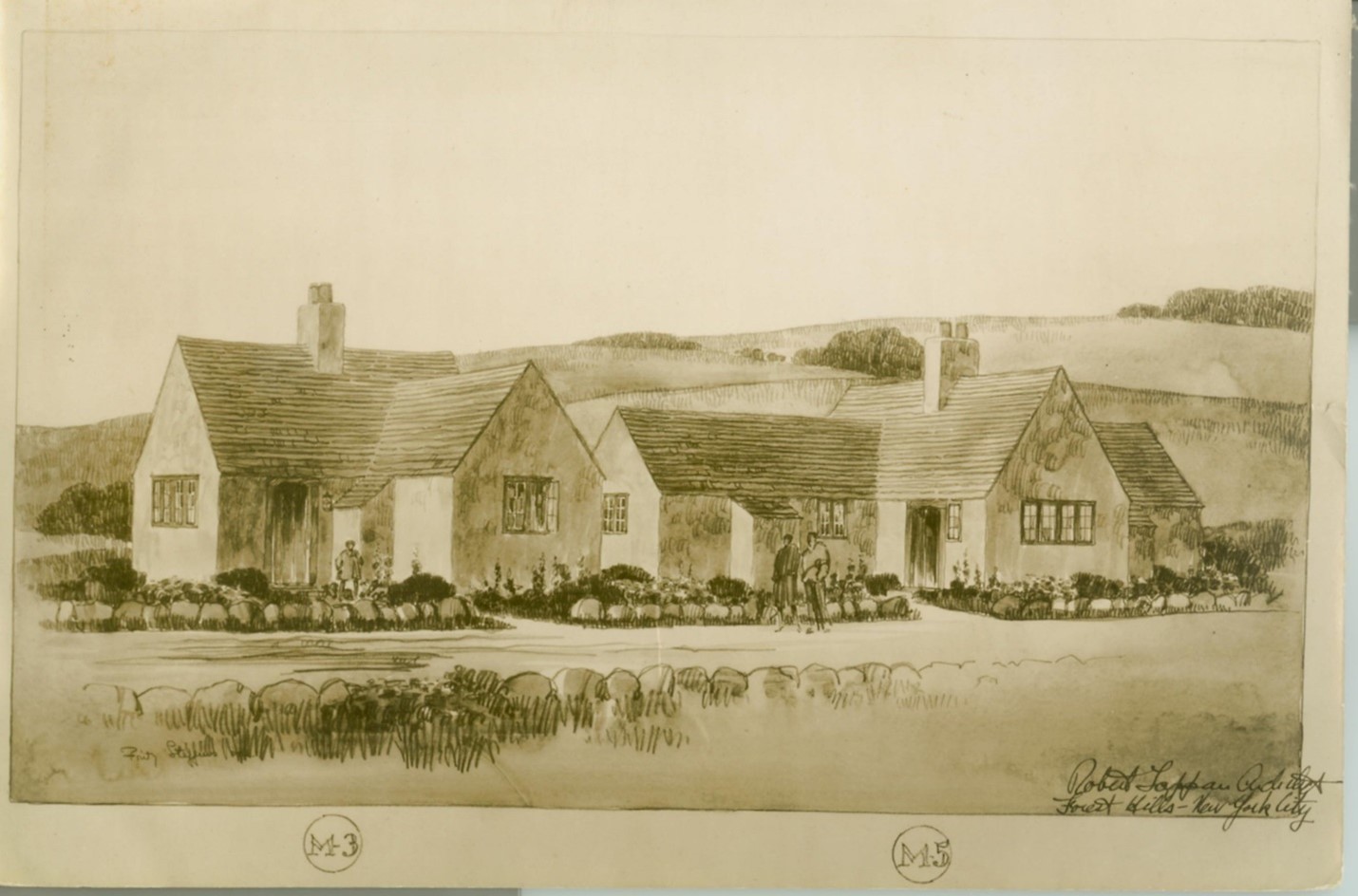
Montauk’s earliest proprietors were fully aware that its workers would need places to live. The original First House was built in 1744, Second House in 1746, and Third House in 1747, all to accommodate the keepers who tended livestock driven annually from East Hampton to Montauk to graze. It was also understood that the keeper of the Montauk Lighthouse, built in 1792, would need somewhere to rest his head.
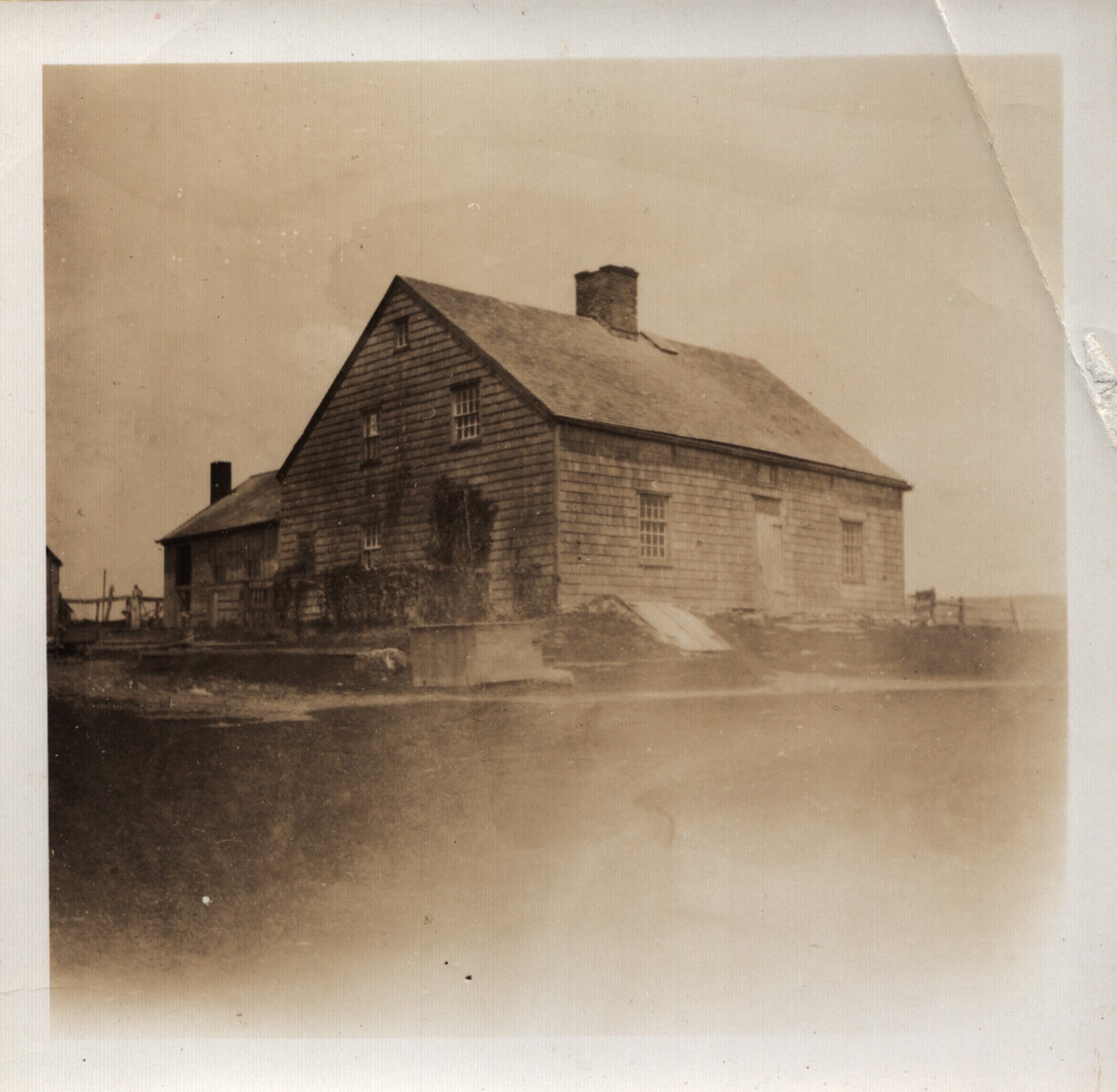
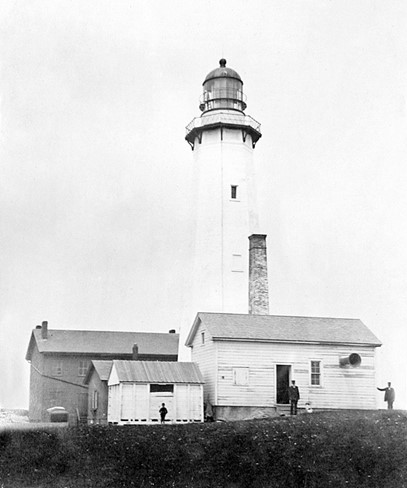
“Of course, the whale oil in those lanterns needed to be refreshed daily,” Dan Rattiner wrote in a brief history of the lighthouse. “For that to happen, a small dwelling was built and attached to the lighthouse to become home for this keeper and his family. Alone there and six hours away by horse and buggy from civilization, the family grew their own vegetables, canned fruit, raised livestock, and caught fish to survive on their own.”
There were no places for railroad workers to live when train service was extended to Montauk in 1895. Broken-down boxcars were moved to Montauk, their wheels were removed, and the boxcars were placed along the site of the future railroad tracks. Then they were fitted with bunks that allowed as many as 40 laborers to live in one car.
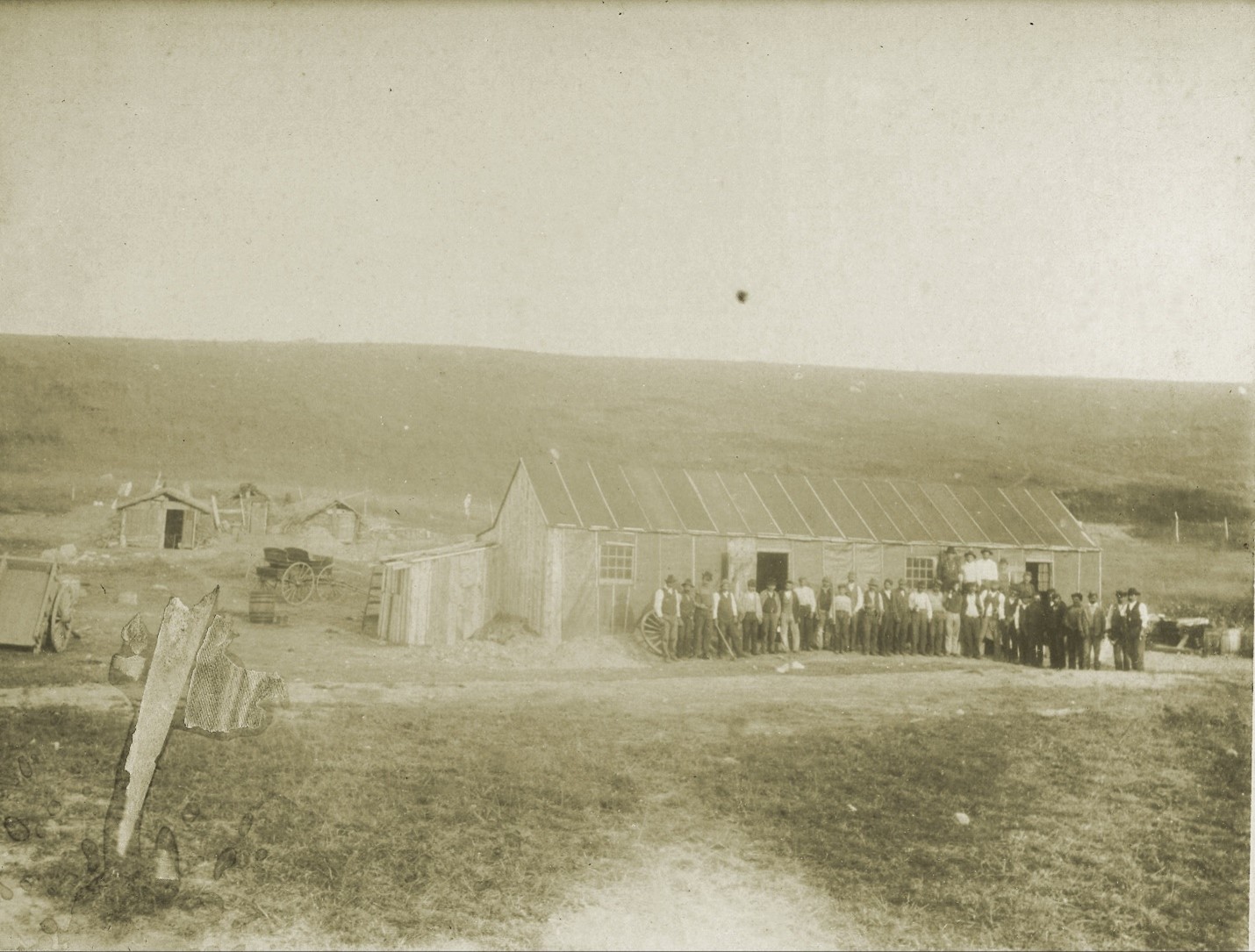

Over time workforce housing included Lifesaving stations and later Coast Guard stations, rows of tents at Camp Wikoff and Camp Welsh, barracks for the Navy, Army, and Air Force – through numerous wars, the military commandeered homes in the fishing village on Fort Pond Bay, the Montauk Manor, even the lighthouse to board its troops.
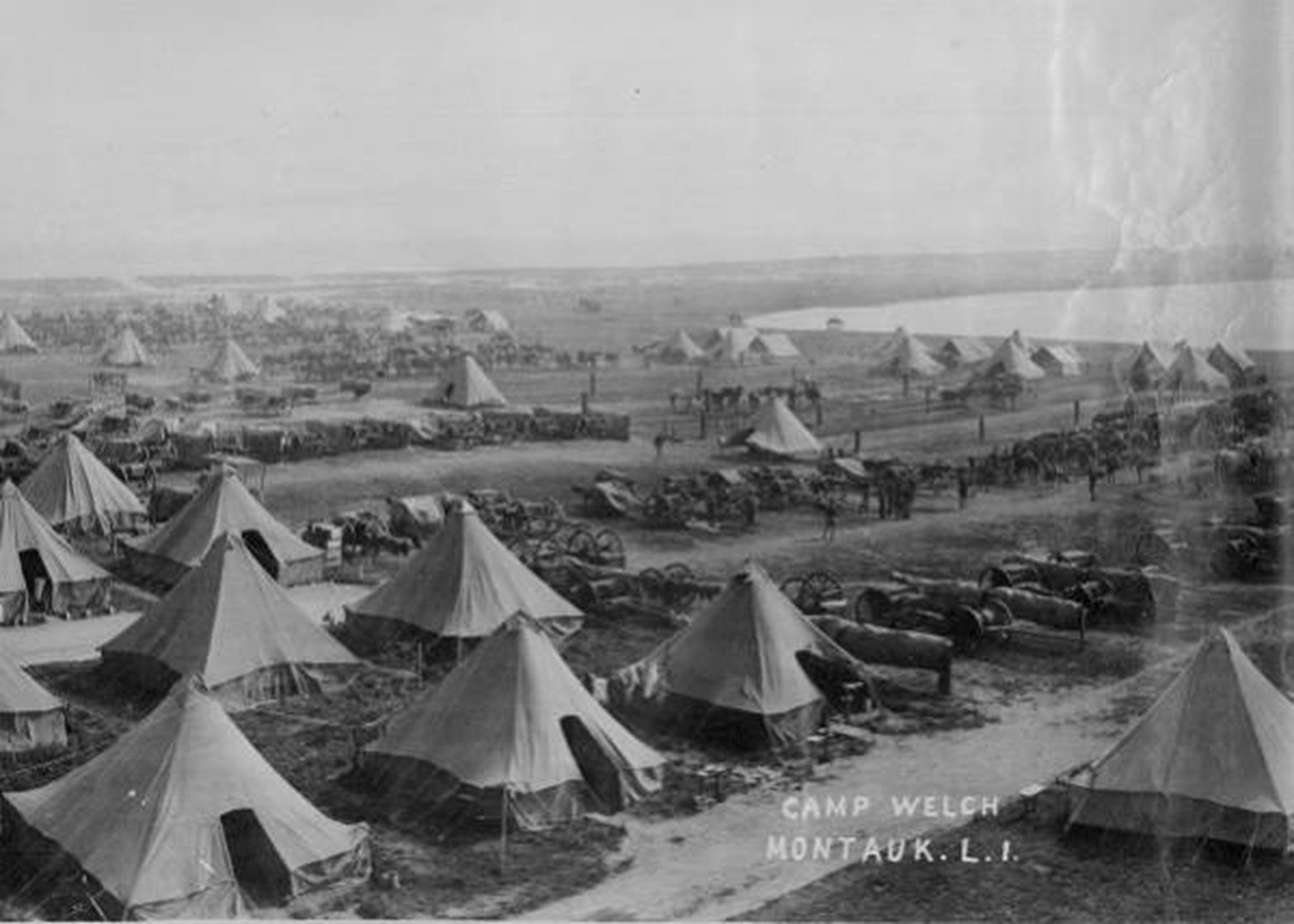
In the late 1920s, as Carl Fisher set about developing what he hoped would be a vast luxury resort in Montauk, he laid out plans for providing housing for the workmen hired to fulfill his vision. To that end architect Robert Tappan created a series of drawings in which workers’ homes, built in the Tudor Revival style, were grouped snugly in “Shepherd’s Neck Village” on Fort Pond. There would be 100 of them in a full-blown town with stores, bachelor apartments, and all conveniences.
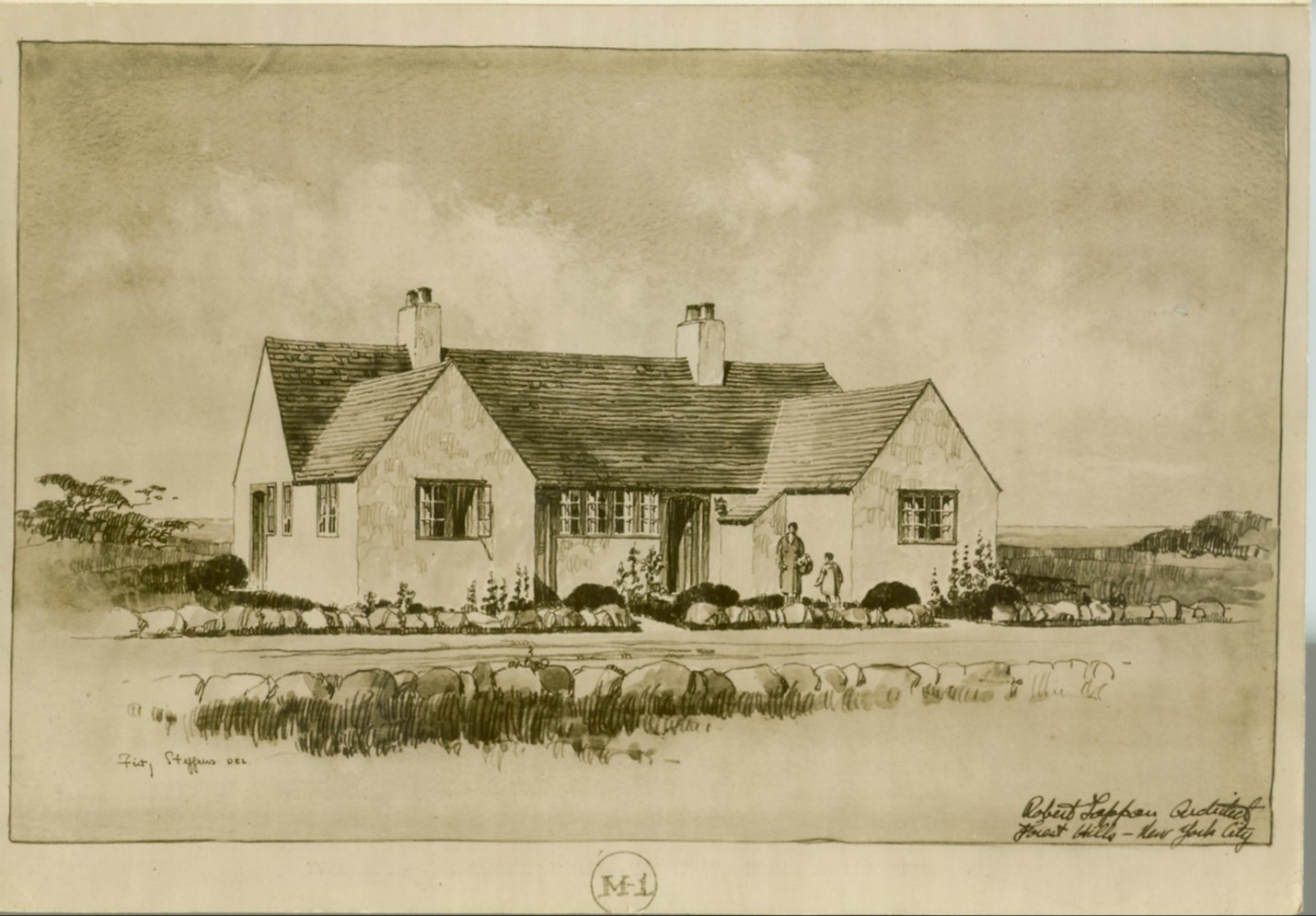
“From a single house in the Shepherd’s Neck Village, constructed during the Spring of 1926, this colony for the employees of the Carl Fisher development has rapidly grown,” the East Hampton Star reported in June of 1927.
“There are many charming houses dotting the hills of Shepherd’s Neck. It is a delightful spot for such a village; the elevation is high, giving the people of the village a lovely view of the surrounding country from their houses.”
“Following the construction of the first house, many others were started and within a short time over fifty houses had appeared on the green hills of this locality. Sidewalks and curbs were built, water mains extended, electric lights installed, and telephone connections made … It is planned to erect a new Montauk School near this village, to replace the present schoolhouse on the highway leading to the village of Montauk.”
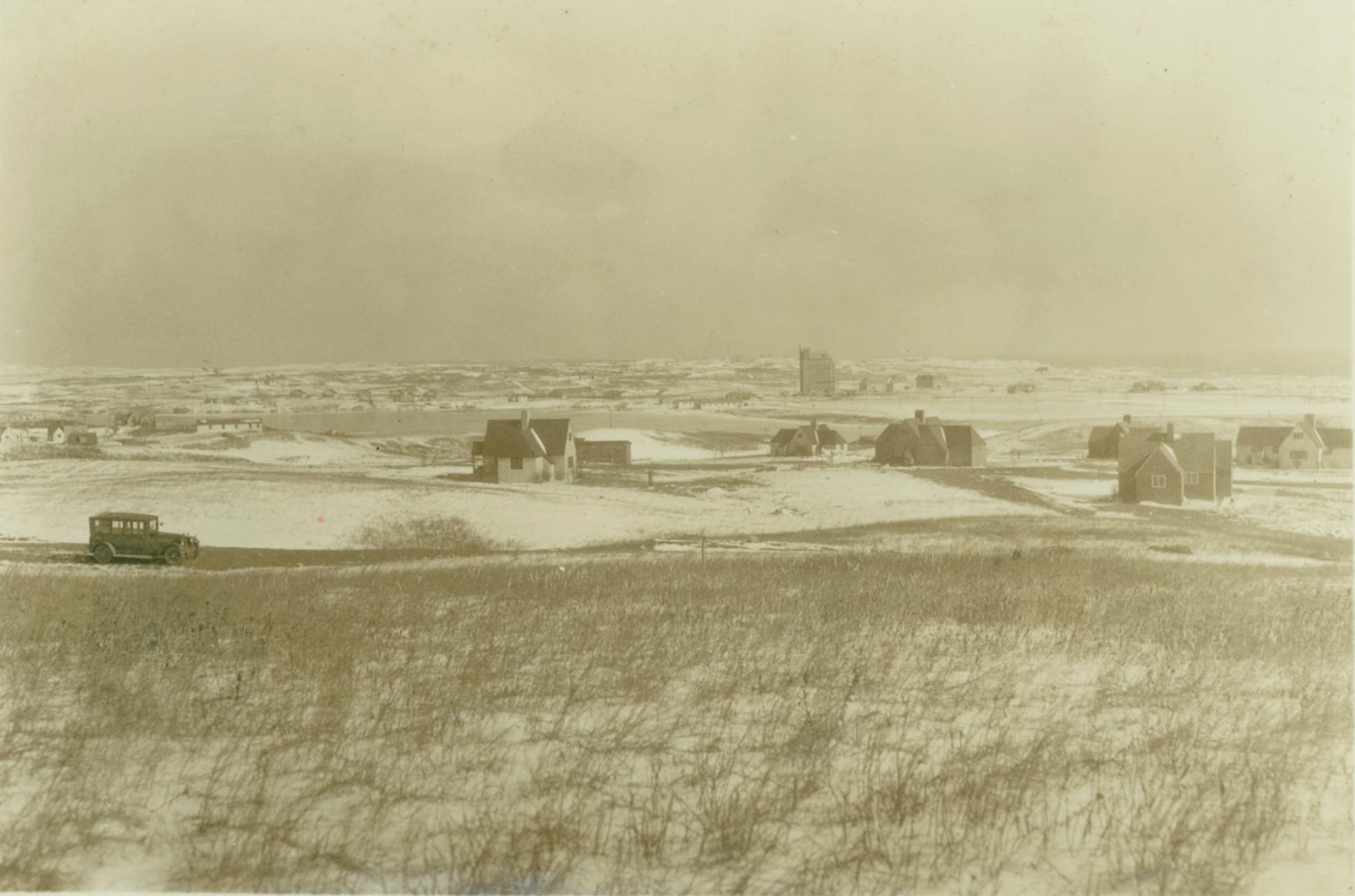
Much later, from 1963 to 1965, the Montauk Beach Company (a descendant of Carl Fisher’s Montauk Beach Development Corporation) and All-State Properties built about 200 summer homes in Montauk. On August 20, 1964, the East Hampton Star reported that development of the Leisurama homes, as they were called, had created a “minor building boom” in Montauk.
Monvent, the company in charge of construction, may have been responsible for the first “trade parade” of workers heading to Long Island’s easternmost point.
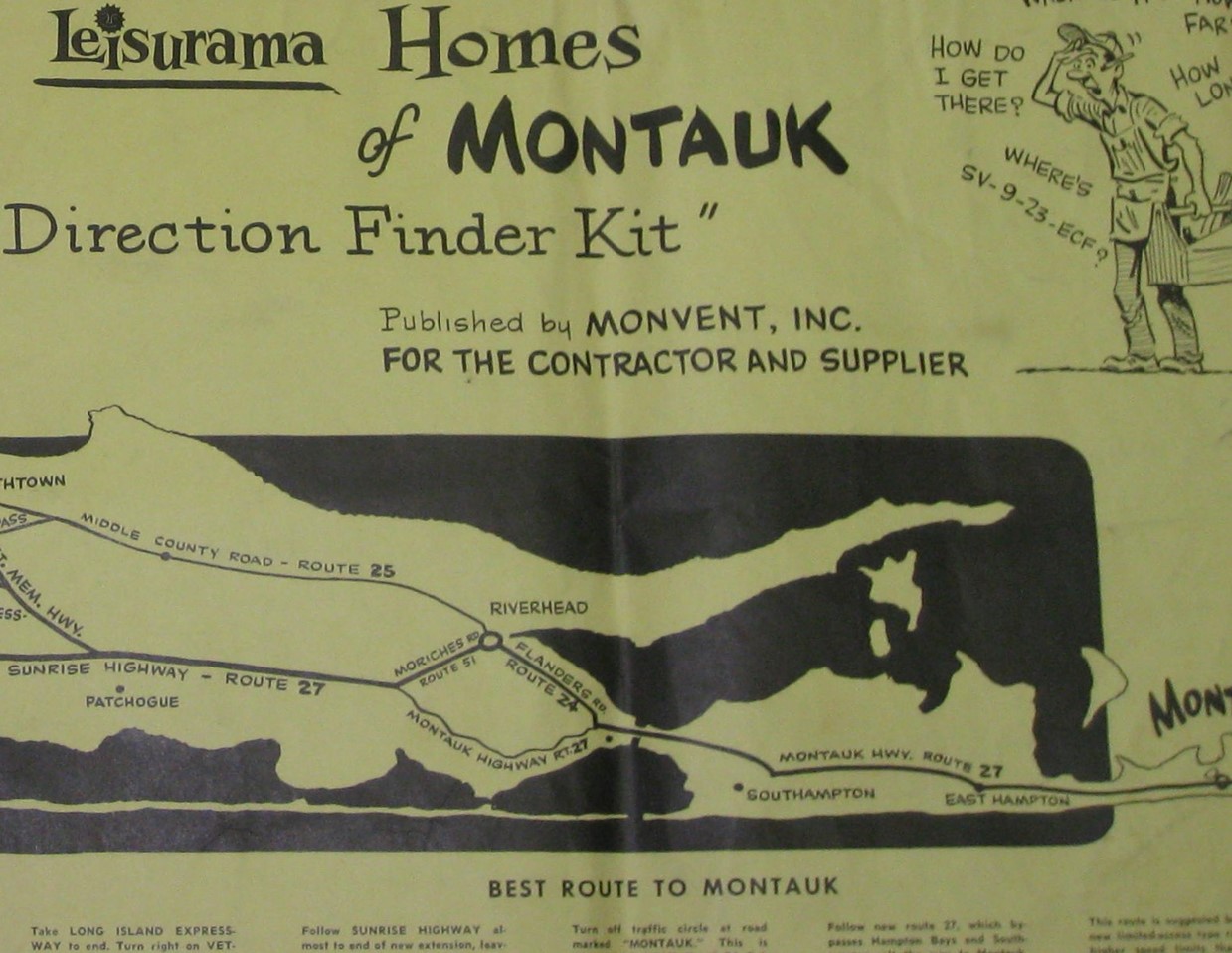
“One indication of the project’s success, observers pointed out, is a carefully prepared brochure including graphic directions for finding Montauk and the Beach Company’s subdivisions and carrying a bit of promotion worthy of the Chamber of Commerce,” the Star reported at the time.
“It was designed especially for Leisurama’s workmen and suppliers. Accommodations for workmen were offered free of charge.”
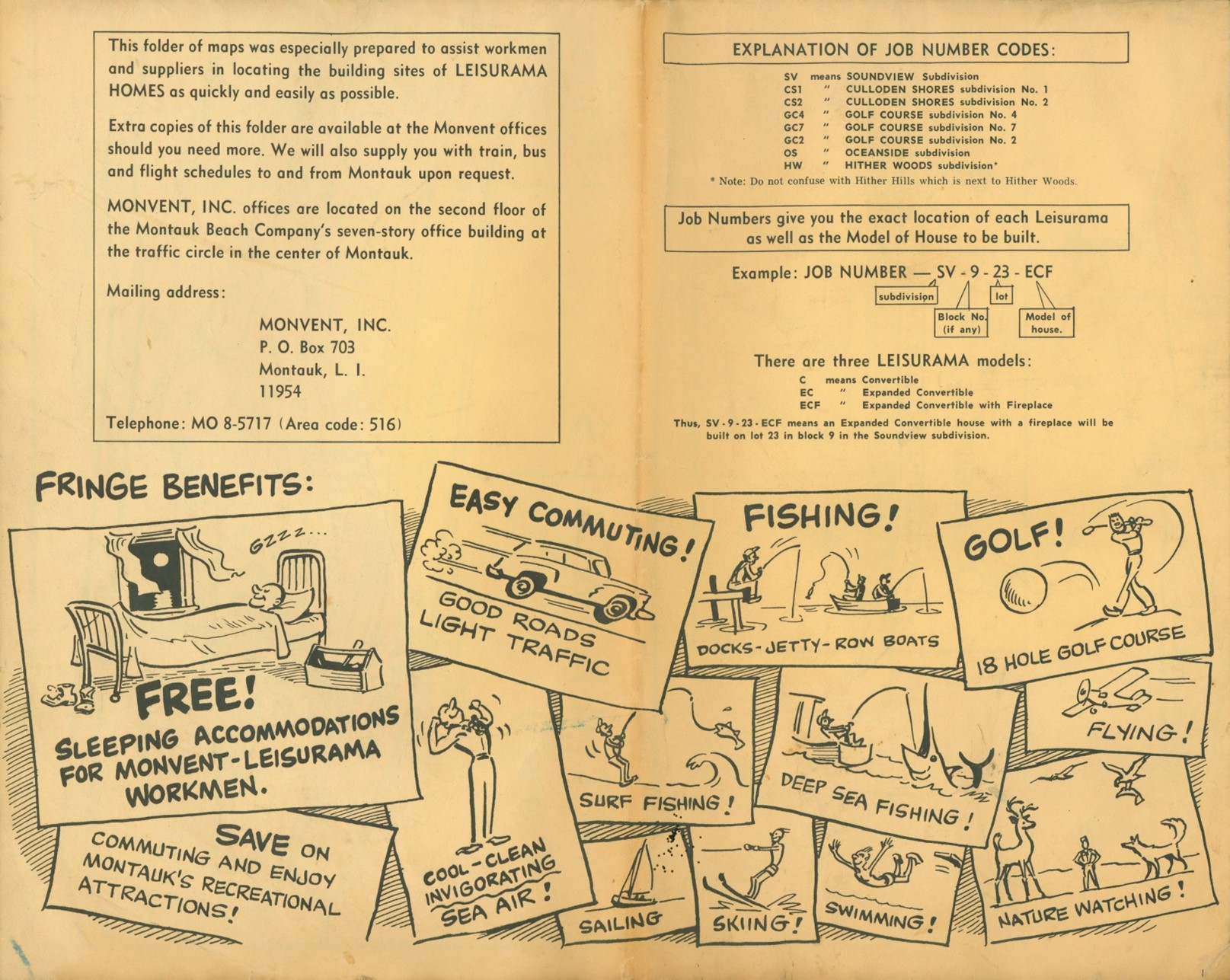

Reply or Comment